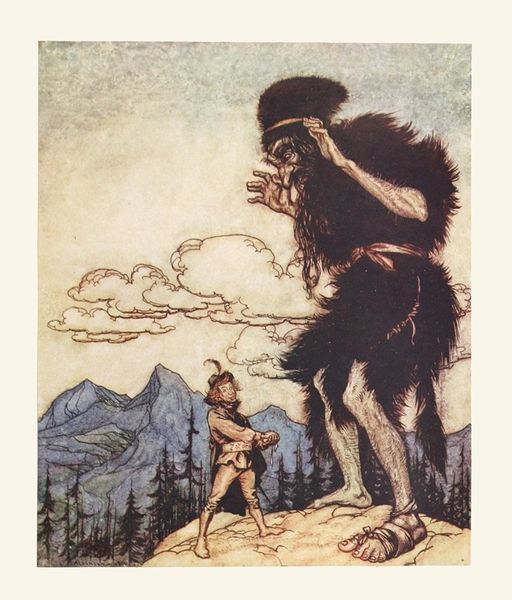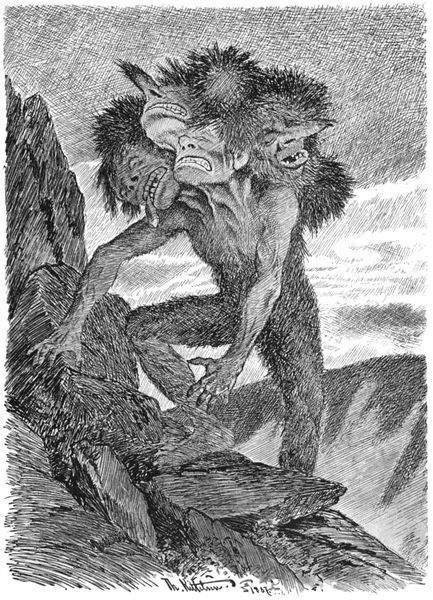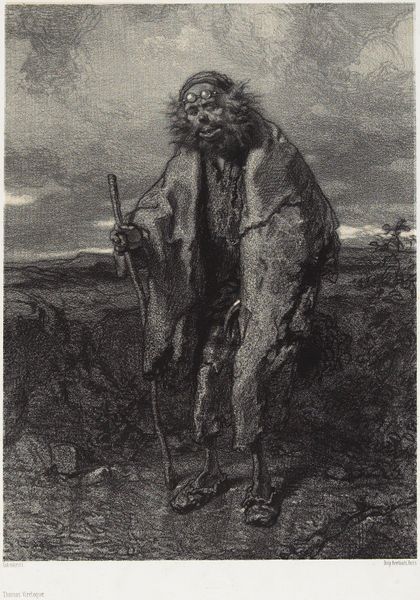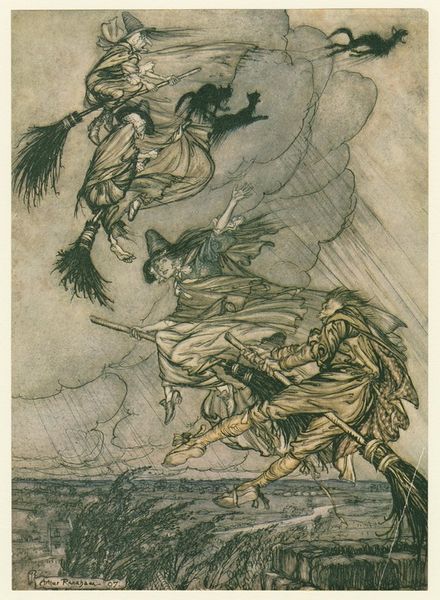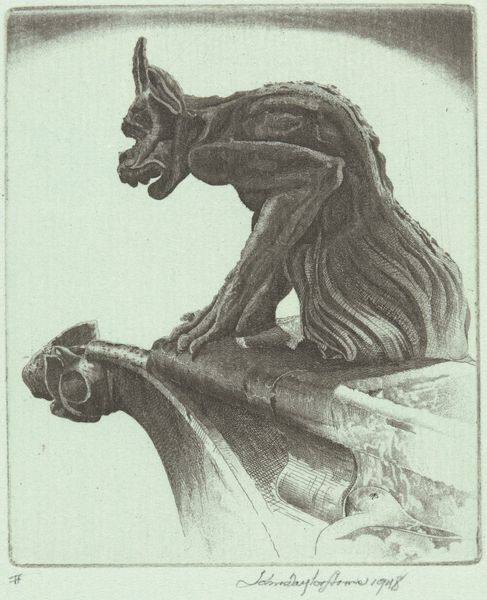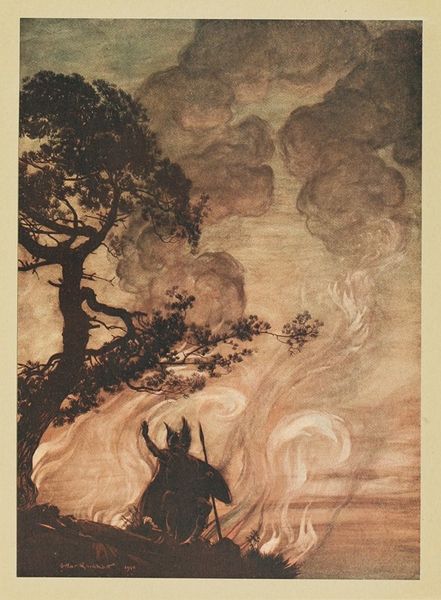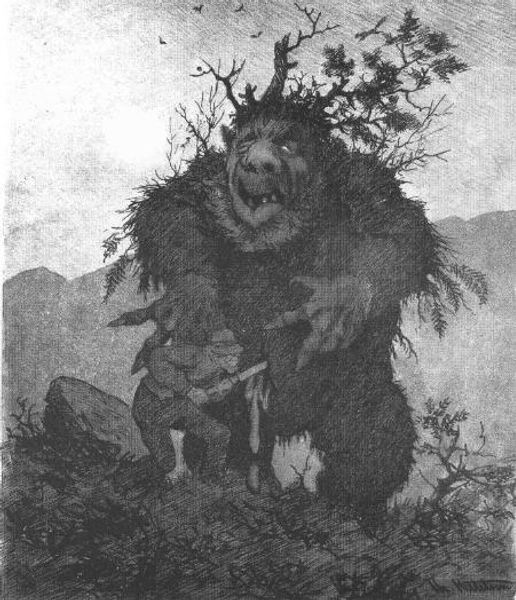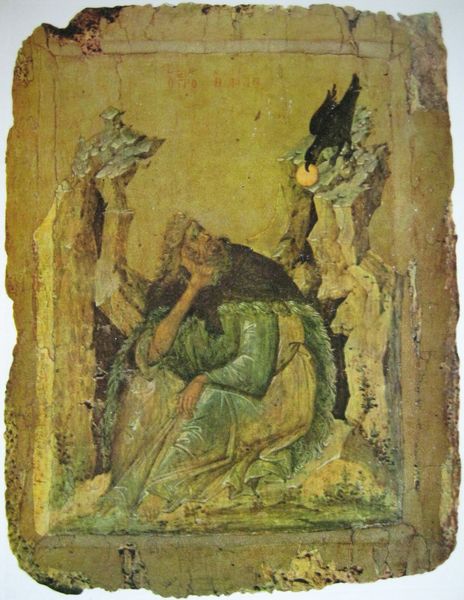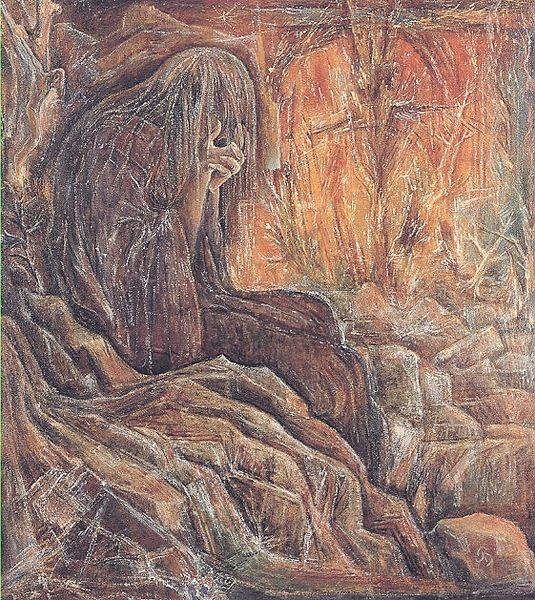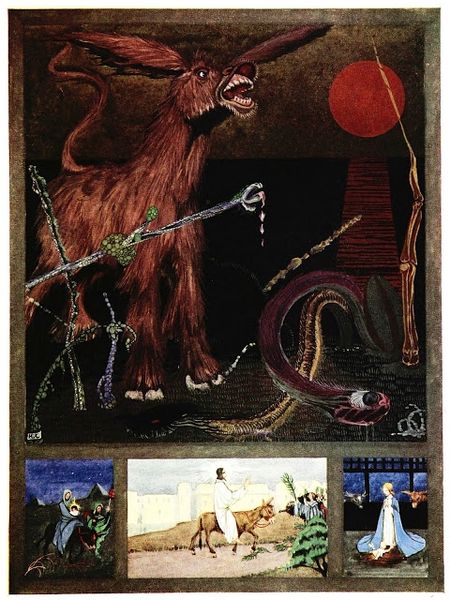
Copyright: Public domain
Curator: This work, "The Dying Mountain Troll," comes to us from the hand of Theodor Kittelsen, crafted in 1892 using oil paint. The piece presents a dramatic intersection of landscape and figuration. What is your immediate impression? Editor: Bleak. Definitely bleak, and unexpectedly intimate for a mythological subject. It’s got this raw, unsettling beauty—like staring into a wounded animal's eyes. Curator: Precisely. Note how Kittelsen deploys a limited palette—earthy browns and grays, set against a pale, almost spectral, sky. Observe, too, how this tonal constraint emphasizes the troll's grotesque yet sympathetic form, clinging to the craggy landscape. Editor: The composition's powerful, too, don't you think? The troll is placed almost centrally, yet hunched over and diminished by the vastness of the approaching twilight behind. Is it supposed to mirror some aspect of the old Norse landscape fading? Curator: It is conceivable. One might read the composition as allegorical, contrasting the individual plight against an indifferent nature. Consider the application of impasto; notice how Kittelsen builds up the paint to articulate the troll's coarse hair and weathered skin. This technique imbues the figure with a tangible, almost palpable presence. Editor: It really does feel like I can touch it— the texture makes me think of old bark and stone. This palpable sense of decay and loss really hit home in my heart when I realized how little regard nature had to give back, no? Curator: Precisely; it is indeed the melancholic realization of impermanence that this canvas so elegantly conveys. Editor: Thinking of impermanence now; I was so focused on the landscape and subject itself but can't neglect to realize what a powerful impact these works had as visual documents of the rich folklore during the height of Norwegian nationalism, right? Curator: Without question. The cultural impact is undeniable, solidifying and concretizing what we think about when understanding that period's symbolism in folklore with Kittelsen. The painting presents itself to be far more than merely oil upon canvas. Editor: Well said. It offers so much more than pigment can provide when discussing the historical and philosophical dimensions of Norwegian pride. A heavy subject, brought delicately into focus with artistic ingenuity. Curator: I agree entirely. The intersectionality present regarding medium, style, thematics, history, and cultural symbolism proves to showcase a robust depth available from works like this.
Comments
No comments
Be the first to comment and join the conversation on the ultimate creative platform.
